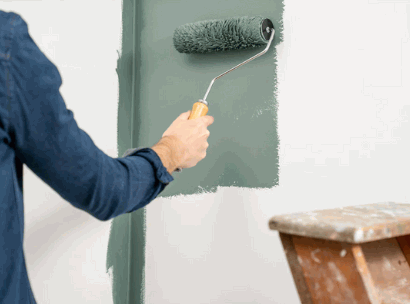Damp proof paint is a special type of paint designed to prevent dampness and moisture from seeping into walls and surfaces. It works by creating a barrier that blocks water from entering the surface, keeping it dry and free from damage. This can be particularly useful in areas prone to high humidity or water exposure, such as bathrooms, basements, and kitchens.
There are several benefits to using damp proof paint. It can help prevent mold and mildew growth, which can be harmful to both the structure of a building and the health of its occupants. It can also protect against water damage, which can weaken walls and cause paint to peel or bubble. Additionally, damp proof paint can improve the overall appearance of a room by creating a smooth and even surface.
However, there are also some drawbacks to consider. Damp proof paint is typically more expensive than regular paint, and it may require multiple coats for optimal effectiveness. It also has a limited lifespan and may need to be reapplied every few years. Additionally, damp proof paint can be difficult to remove if you decide to change the color or finish of your walls.
When applying damp proof paint, it's important to follow the manufacturer's instructions carefully. This may involve preparing the surface beforehand by cleaning and repairing any cracks or holes. It's also important to allow the paint to fully dry before applying additional coats or painting over it with a different type of paint.
Speaking of painting over damp proof paint, it is possible to do so, but it's important to choose the right type of paint. Oil-based or solvent-based paints are not recommended, as they can break down the damp proof barrier. Instead, opt for water-based or latex paints, which are compatible with damp proof paint and will not compromise its effectiveness.
In conclusion, damp proof paint can be a useful tool for preventing dampness and moisture in your home. However, it's important to carefully consider the cost and maintenance involved before making a decision. With proper application and maintenance, damp proof paint can help keep your walls and surfaces dry and in good condition for years to come.
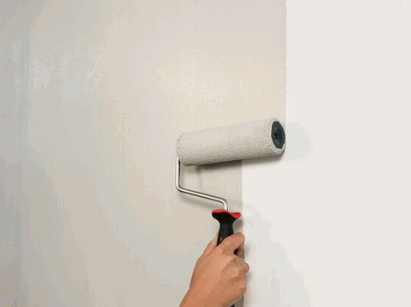
Contents
Damp-proof paint is a specialized coating designed to resist moisture and prevent dampness in various building materials. It provides an effective solution for preserving surfaces in damp conditions.
It acts as a protective barrier, preventing water from penetrating walls, ceilings, and floors. This makes it suitable for use on a variety of surfaces, including concrete, brick, wood, and metal.
Using damp proof paint can help prevent the growth of mold and mildew and protect against structural damage caused by persistent moisture. This ensures the longevity and durability of the underlying construction materials.
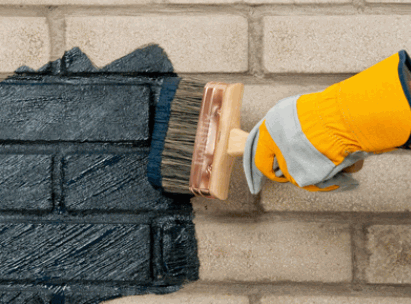
Damp proof paint works by creating a protective barrier that waterproofs surfaces, effectively sealing them against moisture and providing a durable surface treatment that mitigates the effects of dampness.
Damp proof paint is a crucial component in protecting surfaces from water damage and mold growth. Its impermeable layer prevents moisture intrusion, fortifying the surface against decay and deterioration. This makes it an ideal solution for areas prone to damp conditions.
The specialized formulation of damp proof paint allows it to adhere firmly to various substrates, ensuring long-lasting protection. Its waterproofing properties make it an essential tool in moisture control and surface protection strategies.
Discover: How To Apply A Chemical Damp Proof Course
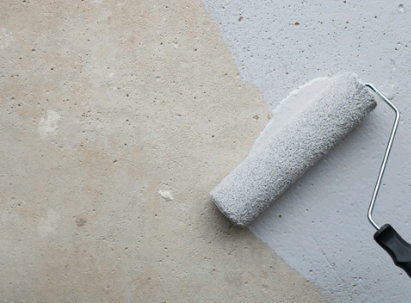
Yes, it is possible to paint over damp proof paint, provided that proper surface preparation is conducted to ensure optimal paint adhesion and longevity in damp conditions.
The key to success when painting over damp proof paint lies in thorough cleaning and repairing any damaged areas to create a smooth and even surface. Applying a bonding primer designed for use on previously painted surfaces can further enhance adhesion. Using high-quality, mold-resistant paint will help protect the surface from potential moisture-related issues in the future. By following these steps, the new coat of paint can effectively adhere to the existing damp proof paint, providing a durable and aesthetically pleasing finish.
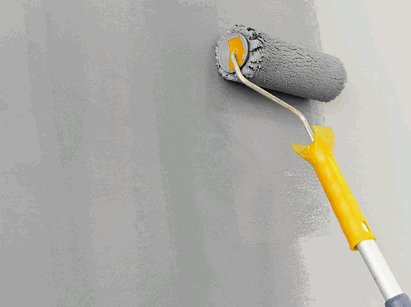
Various types of paint can be used over damp proof paint, including acrylic, latex, or oil-based paints, each offering different attributes that cater to specific building materials and environmental conditions.
Acrylic paint is known for its flexibility, making it ideal for surfaces prone to expansion and contraction, such as wood.
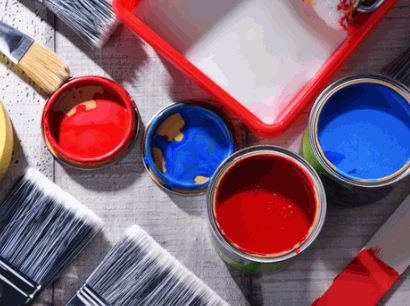
Latex paint, on the other hand, provides excellent adhesion and breathability, making it suitable for surfaces like drywall and concrete.
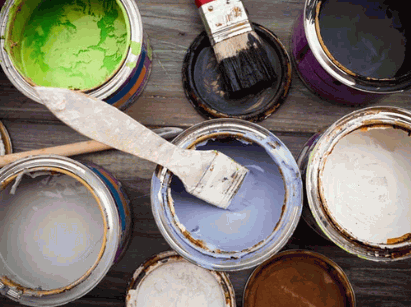
Oil-based paint is highly durable and water-resistant, making it a preferred choice for exterior surfaces exposed to harsh weather conditions.
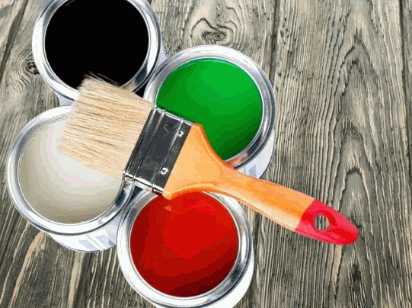
Understanding the unique properties and suitability of each paint type is essential for achieving long-lasting and visually appealing results over damp proof paint.
Before painting over damp proof paint, thorough surface preparation is essential. This involves cleaning, sanding, and priming to ensure a suitable foundation for the new coat of paint. This provides effective renovation advice to maintain surface integrity.
Before beginning any painting project, it's important to thoroughly inspect the surface for any signs of peeling or flaking. If any are found, they should be addressed before moving forward.
Once the surface is free of any loose paint, it's important to clean it thoroughly with a mild detergent and water mixture. This will remove any dirt, grease, or grime that could hinder the adhesion of the new paint.
After cleaning, allow the surface to dry completely before moving on to the next step. Once dry, use sandpaper to smooth out any rough or uneven areas. This will ensure a smooth and even surface for the new paint to adhere to.
Before applying the new paint, it's important to seal the surface with a quality primer. This will not only enhance the adhesion of the paint but also prepare the surface for a successful painting project.
Utilizing damp proof paint offers several benefits, including effective dampness prevention, enhanced moisture control, and long-term building maintenance, contributing to comprehensive property upkeep.
Damp proof paint serves as a protective barrier against moisture intrusion. This prevents the growth of mold and mildew, reducing the risk of structural damage. It also improves indoor air quality by minimizing the presence of dampness-related allergens.
Additionally, by sealing porous surfaces, damp proof paint acts as a cost-effective way to maintain the integrity of construction materials. This ensures a durable and aesthetically pleasing finish for various surfaces in residential and commercial properties.
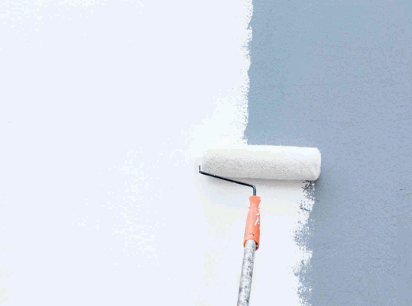
Damp proof paint effectively prevents dampness by creating a waterproof barrier that safeguards surfaces against moisture infiltration. This type of paint is especially useful in areas with high humidity or frequent water exposure, providing long-lasting protection against moisture damage.
Waterproof paint is a powerful barrier that effectively blocks water and moisture from seeping into walls, ceilings, and other surfaces. Its moisture-resistant properties are crucial in preserving the structural integrity and longevity of these surfaces.
In addition to dampness prevention, damp proof paint provides thermal insulation, enhancing the energy efficiency of surfaces and contributing to the effectiveness of surface coatings for long-term maintenance.
This thermal insulation benefit of damp proof paint is particularly valuable in regulating indoor temperatures and reducing heat loss, thus lowering energy consumption.
By creating a barrier against heat transfer, it helps maintain a comfortable environment and minimizes the workload on heating and cooling systems. This not only saves on energy costs but also reduces wear and tear on HVAC systems, aligning with the goal of sustainable and efficient building maintenance.
Damp proof paint effectively resists mold growth, providing protective coatings that inhibit the development of mold and mildew on treated surfaces. This type of paint forms a barrier that prevents moisture from seeping into walls or ceilings, which is crucial in deterring mold and mildew formation.
In addition to its mold-resistant properties, damp proof paint also enhances the durability and longevity of surfaces, making it a valuable investment for maintaining the integrity of residential or commercial properties. The protective coatings offered by damp proof paint play a key role in safeguarding surfaces from environmental factors, ensuring that they remain free from mold and mildew growth over an extended period.
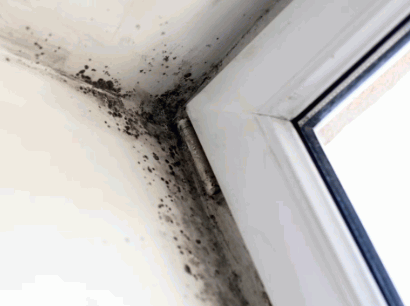
Using damp proof paint improves the aesthetic appeal of surfaces, contributing to an enhanced surface finish and visual appeal, while simultaneously providing effective moisture resistance and protection.
Damp proof paint not only protects against moisture but also enhances the appearance of surfaces, leaving a lasting impression. Its incorporation of surface finishing results in a seamless, glossy, and flawless look, making it a great choice for maintaining a pristine appearance over time.
With its focus on visual enhancement, damp proof paint is essential for achieving a superior surface finish that is both visually appealing and durable in various environmental conditions.
Despite its benefits, using damp proof paint may present certain drawbacks, such as limited color options and potential incompatibility with specific types of water damage, requiring careful consideration during application.
Damp proof paint acts as a reliable barrier against moisture, but its limited color options can restrict design flexibility and potentially limit aesthetics. Additionally, certain types of water damage, like constant high levels, may pose challenges for damp proof paint to effectively protect against. Therefore, it's crucial for homeowners and property managers to carefully evaluate the specific water damage scenario before selecting damp proof paint, as it may not be suitable for all situations.
One drawback of damp proof paint is its limited color options, which may pose challenges in achieving specific aesthetic preferences and necessitate effective painting techniques to address color limitations.
This limitation can be particularly demanding when homeowners desire a particular color scheme to complement their interior decor. In such cases, it becomes imperative for painters to employ skillful blending and layering techniques to create customized shades from the available options.
The selection of an appropriate base color becomes crucial, as it serves as the foundation for subsequent layers. Strategic use of lighting and texture can also enhance the visual appeal, compensating to some extent for the restricted color choices.
Damp proof paint may not be suitable for all types of dampness, requiring careful consideration of its compatibility with specific scenarios and the effectiveness of protective coatings in mitigating diverse forms of water damage.
It is essential to recognize that while damp proof paint can be effective in managing limited moisture ingress, it may not adequately address more severe cases of water seepage or rising dampness.
In such situations, protective coatings, such as waterproof membranes or sealants, play a crucial role in providing a more comprehensive barrier against water penetration.
Therefore, it is important to assess the extent of the dampness and the underlying cause before solely relying on damp proof paint as the solution.
Another drawback of using damp proof paint is its potential expense, which may factor into property maintenance costs and necessitate careful budget considerations for renovation and maintenance projects.
This additional cost can impact the overall financial plans for property upkeep, especially if it becomes necessary to apply damp proof paint to multiple areas within a structure.
It is essential for property owners and renovation project managers to conduct thorough cost-benefit analyses and explore alternative solutions to ensure that the expenses related to using damp proof paint align with the long-term goals and financial resources available for property maintenance.
The application of damp proof paint involves several key steps, including thorough surface preparation, precise paint application, and appropriate drying time. This requires adherence to effective construction techniques for optimal results.
Before applying damp proof paint, it is crucial to thoroughly inspect the surface for any cracks, holes, or uneven areas. These should be addressed and filled with suitable filler material to ensure a smooth and level surface.
When applying the paint, it is important to use a high-quality brush or roller to achieve even coverage. It is also essential to allow sufficient drying time between coats to ensure the paint effectively seals the surface against dampness.
By following these meticulous application techniques and construction practices, you can ensure long-lasting protection against moisture and damp issues.
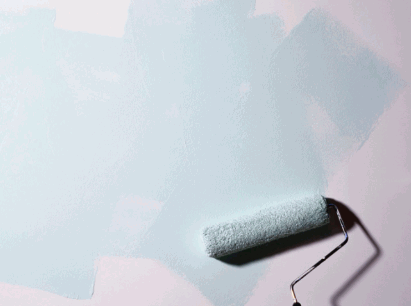
The initial step in applying damp proof paint is to prepare the surface. This may involve repairs, treatment, and the use of appropriate construction materials to ensure a suitable foundation for the paint application.
This preparation phase is crucial in addressing any existing issues such as cracks, leaks, or deterioration in the surface. Repairing these areas using suitable construction materials like mortar, sealants, or waterproofing compounds is imperative to create a sound base for the damp proof paint.
The treatment process may involve the application of primers, fillers, or specialized solutions to enhance the adhesion and effectiveness of the paint in combating dampness.
Once the surface is prepared, the next step is to apply the first coat of damp proof paint. This is crucial for effective building refurbishment as it addresses both moisture resistance and surface protection needs.
This initial coat plays a vital role in sealing the surface against dampness, preventing moisture from penetrating the walls or floors. It forms a protective barrier that enhances the structural integrity of the building and reduces the risk of deterioration caused by water ingress.
To achieve optimal results, the first coat should be applied evenly and generously to all susceptible areas, such as basements, foundations, and exterior walls. Incorporating specialized moisture-resistant additives helps to fortify the building's defense against potential water damage, ultimately contributing to a durable and long-lasting structure.
After applying the first coat, it is crucial to allow sufficient drying time for the damp proof paint. This ensures optimal paint durability and surface integrity, contributing to effective moisture resistance.
This adequate drying time is essential as it allows the paint to form a strong bond with the surface. This enhances its protective qualities against moisture and external elements.
Insufficient drying time can lead to premature wear and peeling, jeopardizing the longevity of the paint job. By prioritizing thorough drying, you can significantly improve the overall resilience and longevity of the painted surface. This provides lasting protection against moisture infiltration and ensures a visually appealing and durable finish.
In certain cases, applying a second coat of damp proof paint may be necessary to meet specific construction standards and enhance the overall effectiveness of moisture resistance and surface treatment.
This additional coat can serve as a safeguard against potential moisture infiltration and help fortify the structural integrity of the building. It ensures that the surface is adequately protected from damp or water seepage, thereby prolonging the lifespan of the construction.
The application of multiple coats can provide a more uniform and resilient barrier, addressing any imperfections or vulnerable areas of the surface to ensure a comprehensive and long-lasting defense against moisture-related issues.
Utilizing damp proof paint offers several benefits, including effective dampness prevention, enhanced moisture control, and long-term building maintenance, contributing to comprehensive property upkeep.
This type of paint creates a protective barrier that helps to shield walls and surfaces from water and moisture infiltration, reducing the risk of mold and mildew growth.
Its application can also improve the overall structural integrity of the building, as it helps to prevent damp related deterioration and decay. By incorporating damp proof paint into construction and maintenance methods, property owners can significantly extend the lifespan of their structures and reduce the need for costly repairs in the long run.
